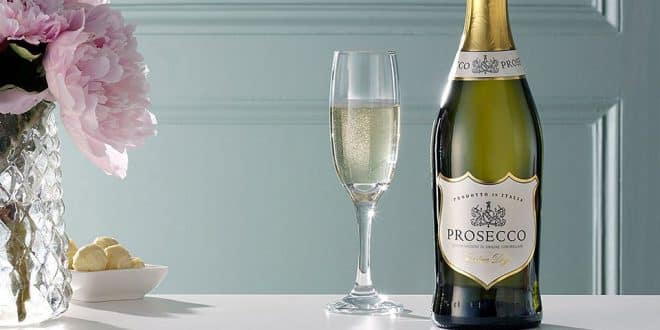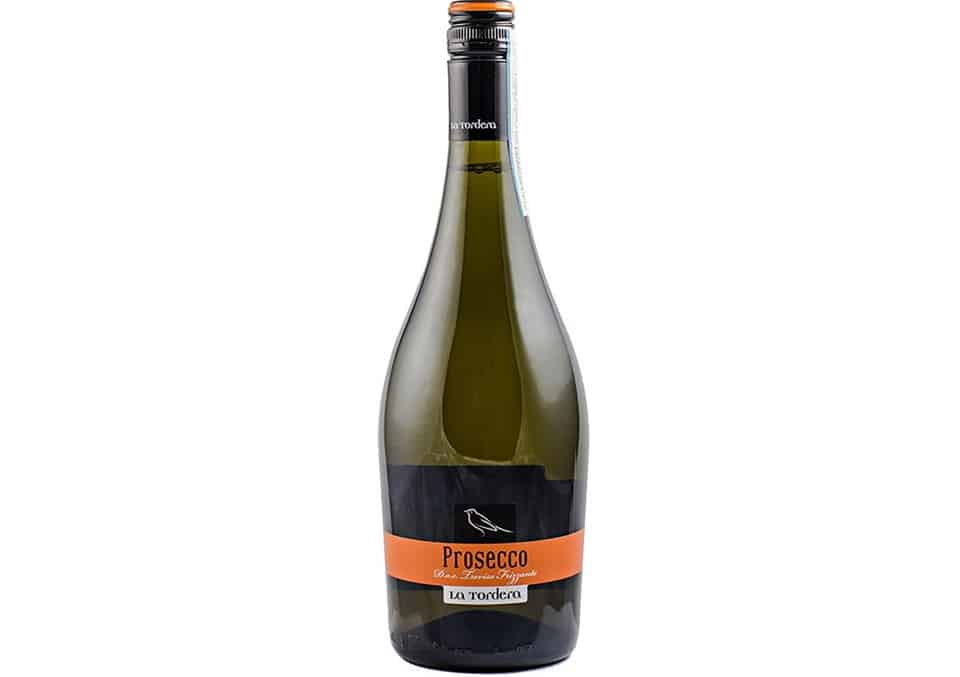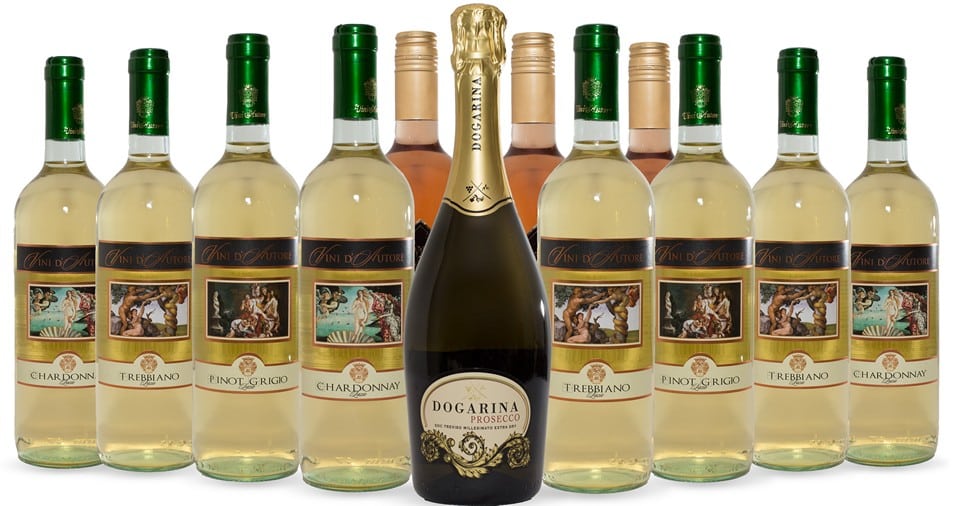Prosecco is like a white rose in the garden of Italian wines. Why a rose? Because its exceptional quality and reputation are further highlighted by its immense popularity. It is exported more than any other Italian wine.
In addition, in 2014, Prosecco surpassed French champagne in terms of the number of bottles sold worldwide. Many people mistakenly believe that it is only available in a sparkling variant. In reality, there are several types of this beverage. Our article will help you discover the whole truth about this wine and even a little more.
Page Contents
Origin
Interestingly, wine began its life with a completely different name. In the city of Trieste in the early 16th century, the local wine “Ribolla” was associated with an ancient drink called “Pucino.” This drink was not only described by Pliny, the Elder in his “Natural History” but also highly praised for its medicinal properties by the wife of Emperor Augustus.
The need to distinguish “Ribolla” from wines with similar names in other regions of Italy eventually led to a change in its name. The beverage was named after the presumed place of its ancient production – the village of Prosecco.
The first known mention of a wine with the name “Prosecco” is attributed to an Englishman named Fynes Moryson, who, after visiting northern Italy in 1593, provided a detailed description of the beverage and placed it among the famous wines of the republic. In 1754, the term Prosecco appeared in the book “Il roccolo Ditirambo” by Aureliano Acanti.
Until the 1960s, it was quite sweet and differed only slightly from Asti wine produced in Piedmont (Piemonte). However, the producers didn’t stand still and actively improved their techniques. Today, high-quality dry varieties are available on the market.
In 2008, Prosecco di Conegliano-Valdobbiadene, Prosecco di Conegliano, and Prosecco di Valdobbiadene were awarded the DOC category. In 2009, the wine further elevated its status to DOCG.
Production
The beverage bearing the name Prosecco today not only holds a significant market share among sparkling wines but also adheres to strict production regulations. The production zone is limited to parts of the Veneto region, excluding Rovigo and Verona, and the entire Friuli-Venezia Giulia region.
The grape used for Prosecco production is called Glera. It must account for at least 85% of the total weight of the raw materials. A small portion of the berries (no more than 15%) is allowed to be supplemented with varieties such as Verdiso, Bianchetta Trevigiana, Perera, Glera lunga, Chardonnay, Pinot Bianco, Pinot Grigio, and Pinot Nero.
The method used to produce most varieties of it is known as the Charmat-Martinotti method. It involves sending the wine to ferment in pressure tanks after the vinification and filtration processes. The wine remains in the tank for a very short period (15-20 days) compared to the traditional bottle fermentation used in the production of French champagne.
After the completion of the aforementioned stage, the wine is transferred to another tank and filtered again to achieve its characteristic clarity. Then, Prosecco is bottled and sealed with a mushroom-shaped plastic cork.
There is a variant of Prosecco called Prosecco Col Fondo, which is made using the traditional bottle fermentation method. It is highly valued but rarely available for sale.
Quality Levels
Currently, this wine is available in different quality levels. In terms of the production areas’ visual representation, they form a pyramid-like structure.
At the pinnacle of the pyramid is an unrivaled category of Prosecco. Starting from the base, the list of quality levels is as follows:
- Prosecco DOC: The most popular version of the wine, produced in 9 provinces of the Veneto and Friuli-Venezia Giulia regions.
- Prosecco Conegliano Valdobbiadene Superiore DOCG: The most concentrated version of Prosecco. The grapes for this wine are grown in the hills between the municipalities of Valdobbiadene and Conegliano.
- Colli Asolani DOCG: A wine labeled without the term “Prosecco.” It is produced in the Treviso province, specifically in the Montello and Colli Asolani hill areas.
- Prosecco Conegliano Valdobbiadene Superiore Rive DOCG: This product comes from the hilly region between Vittorio Veneto and Valdobbiadene, comprising 43 municipalities. It is exclusively produced as a sparkling wine.
- Valdobbiadene Superiore di Cartizze DOCG: A wine whose production area is limited to a mere 0.4 hectares of land west of Valdobbiadene. The combination of soil and climatic factors in this territory is considered the most ideal for the Glera grape, resulting in a bouquet of aromas that surpasses the lower-quality levels.
Some wineries produce Prosecco classified as IGT, a lower category indicating lower quality standards. However, it should be noted that only professional experts can truly discern the differences in taste and aroma.
Varieties
Depending on the pressure to which the beverage is subjected during production and bottling, It comes in different variations:
- Frizzante – the pressure in the bottle is less than 3 atmospheres. Minimum alcohol content is 9%. It exhibits a light and short-lived sparkle in the glass.
- Spumante – the pressure is more than 3 atmospheres. Minimum alcohol content is 11%. It displays abundant and persistent bubbles in the glass.
There is also a still version of the wine, known as tranquillo in Italy, which means “calm.” It has a minimum alcohol content of 10.5%. However, it is not widely popular, and its annual production accounts for less than 5% of the total volume of this wine. Moreover, it is hardly exported.
In all variations, Prosecco is a straw-yellow-colored beverage with a fresh and fruity flavor. Based on sweetness level, sparkling wines are categorized as follows:
- Brut – up to 12 grams per liter of residual sugar (RS). This is the most modern version characterized by delicate aromas of citrus, herbs, and floral notes.
- Extra Dry – 12-17 g/L RS. It is a traditional style with rich aromas of fruits, apples, and pears. The taste is soft yet dry.
- Dry – 17-32 g/L RS. It differs from the other versions with its aromas of ripe fruits, tropical notes, and a spicy taste.
Tranquillo Prosecco is only available in the dry style. It is worth noting that until the mid-1970s, the traditional Prosecco was only the tranquillo type. However, after the introduction of the Charmat-Martinotti method, winemakers began producing a wide range of sparkling wines.
Which Prosecco to try
The immense popularity and wide variety of Prosecco options offer both choices and confusion to consumers. How does one select a product with the optimal balance of price and quality? In Italy, the Vinibuoni d’Italia guide provides guidance by listing the best wine producers of the year. According to this guide, we have compiled a list of recommended Prosecco bottles:
- Asolo-Prosecco DOCG Spumante Superiore Extra Dry Vintage 2014, produced by Cirotto di Asolo winery, is priced at 10-12 Euros.
- Valdobbiadene Prosecco Superiore DOCG Spumante Brut 2014, produced by Bortolin Angelo Spumanti di Valdobbiadene winery, is priced at 10-12 Euros.
- Valdobbiadene Prosecco Superiore DOCG Spumante Brut 5 grammi 2013, produced by Malibràn di Susegana winery, is priced at 13-15 Euros.
- Valdobbiadene Prosecco Superiore DOCG Spumante Brut Particella 68 2014, produced by Sorelle Bronca di Vidor winery, is priced at 15-17 Euros.
- Valdobbiadene Prosecco Superiore DOCG Spumante Brut Rive di Farra di Soligo Col Credas 2014, produced by Adami di Vido winery, is priced at 12-14 Euros.
- Valdobbiadene Prosecco Superiore DOCG Spumante Brut Vecchie viti 2014, produced by Ruggeri di Valdobbiadene winery, is priced at 16-18 Euros.
- Valdobbiadene Prosecco Superiore DOCG Spumante Extra Dry 2014, produced by Vetoraz Spumanti di Valdobbiadene, is priced at 12-14 Euros.
In the post-Soviet space, Prosecco Martini enjoys special popularity. The famous brand produces a DOC category beverage with an alcohol content of 11.5%. Its color is straw-yellow, and the aroma is delicate with soft fruity notes. The taste is harmonious and broad. The cost of the wine in the territory of the Republic does not exceed 5 Euros for 0.75 liters.
How and What to Pair Prosecco With
In Italy, Prosecco is widely consumed as a versatile wine. Outside the Republic, it is often enjoyed as an aperitif. Like other sparkling wines, it is served chilled (at 6-8 degrees Celsius). The best glass to use is a tulip-shaped goblet. Its height and slimness help preserve the bubbles for an extended period, while the wide rounded top captures the entire bouquet of fruit aromas.
Unlike Champagne, it does not undergo bottle fermentation, and its effervescence diminishes over time. Therefore, the wine is consumed when it is young (up to 3 years old), although high-quality it can be aged for up to 7 years. The average calorie content of Prosecco is around 120 kcal.
Prosecco is remarkably versatile and pairs well with a wide range of dishes. Prosecco Brut, with its rich flavor, is an excellent accompaniment to appetizers, soups, pasta, rice, risotto, white meat, fish, and fresh or moderately aged cheeses.
Still Prosecco is served with soups or omelets.
The Extra Dry version is perfect as an aperitif. Its gentle taste pairs well with seafood, legume soups, and white meat.
Dry Prosecco is sweet enough to complement desserts and is also great with fruits and seafood, particularly mussels.
Cocktails with Prosecco
Modern consumers love to experiment and create unique flavors. Bartenders have also embraced the popularity of Prosecco by incorporating it into many cocktails. We have gathered a few unusual recipes that you can easily prepare at home:
- Eldorado: Tequila – 50 ml, Aperol – 40 ml, mandarin juice – 74 ml, Brut Prosecco – 100 ml, ice cubes.
- Barracuda: Rum – 75 ml, Galliano liqueur – 25 ml, fresh pineapple juice – 100 ml, Extra Dry Prosecco as a topper.
- Red Moon: Watermelon juice – 80 ml, pineapple juice – 40 ml, strawberry juice – 40 ml, Brut Prosecco – 40 ml.
- Revolution: Pineapple juice – 80 ml, mint syrup – 20 ml, fresh mint leaves – 3 sprigs, brown sugar – 1 teaspoon, Brut Spumante Prosecco – 100 ml, diced apple and lime.
All cocktails are prepared in the same way. Mix all the ingredients, except for the sparkling wine, in a shaker or blender (except for the diced apple and lime in Revolution, which are placed at the bottom of the glass). Fill a chilled glass with ice and pour in the mixture, then top it off with Prosecco. The glass can be garnished with a slice of any fruit.
Now the famous Italian wine reveals fewer secrets to you. We pass the baton into your hands so that you can embark on a quest for your Prosecco. Live to the fullest, embrace contradictions, and remember, “No celebration is complete without Prosecco, both for the bourgeois and the common man!”
Interesting Facts about Prosecco
- Prosecco, a sparkling wine from Italy, has a rich history that dates back to ancient Roman times, with evidence of grape cultivation in the Prosecco region as early as the 1st century AD.
- Prosecco production is centered in the Veneto and Friuli Venezia Giulia regions of northeastern Italy, where the cool climate and hilly terrain provide ideal conditions for growing the Glera grape, the main variety used in Prosecco.
- Unlike Champagne, which undergoes a secondary fermentation in the bottle, Prosecco is typically made using the Charmat method, where the secondary fermentation takes place in large stainless steel tanks. This method preserves the wine’s freshness and fruity flavors.
- Prosecco is known for its lively bubbles and crisp, fruity profile. It often exhibits notes of green apple, pear, citrus, and white flowers, creating a refreshing and approachable drinking experience.
- The popularity of Prosecco has soared in recent years, with global consumption reaching record levels. In 2019 alone, over 554 million bottles of it were produced, making it one of the most consumed sparkling wines worldwide.
- Prosecco is versatile and can be enjoyed in various ways. It is commonly served as an apéritif, paired with light appetizers, or enjoyed on its own. It also serves as a base for cocktails such as the famous Bellini and Spritz.
- Prosecco offers a range of styles to suit different preferences. The most common classifications are Prosecco DOC (Denominazione di Origine Controllata) and Prosecco Superiore DOCG (Denominazione di Origine Controllata e Garantita), with the latter representing the highest quality level. Prosecco Superiore DOCG wines are produced in specific sub-regions and are subject to strict regulations to ensure superior quality.
 Italy for me From Italy with love
Italy for me From Italy with love











